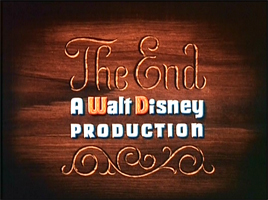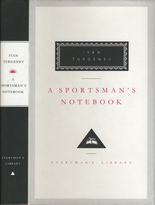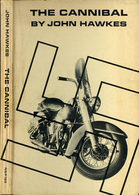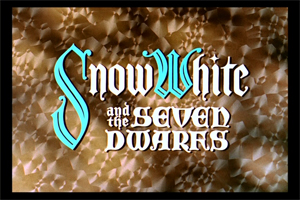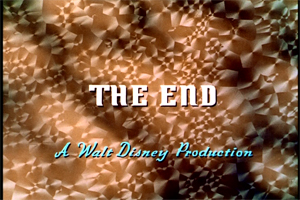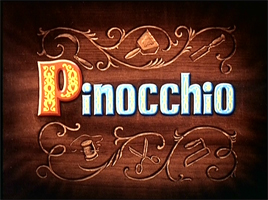
BROOM I liked it. I thought it was a lot better than Snow White and I enjoyed it a lot more.
ADAM It’s a lot more dramatically taut than Snow White. Although it’s still not a fully developed story. It’s a picaresque with three episodes. But that’s definitely better than the interminable doodling of Snow White.
BROOM It may not be like a normal plotted movie in form, but it’s something legitimate in itself. While we were watching, Beth said that the movie was like…
BETH ….a terrible dream. It is.
BROOM I think that’s a legitimate thing for a movie to be. There wasn’t a point where I wished it were more plotted or had more of an arc. It has its own kind of arc.
BETH Where does the story come from?
BROOM It’s by an Italian author, Carlo Collodi, but I don’t know what the original is like; I don’t know if it’s stories or a novel or what. I’m curious to read it.
ADAM Would anyone in 1940 have known the original source material?
BROOM The opening shot of the storybooks implies that it was on par with Peter Pan and Alice in Wonderland.
BETH Was it their goal to make movies out of all of the canonical fairy tales and children’s literature? Both these movies start with a book. Alice in Wonderland does too, I think.
BROOM A lot of them start with books, to show that “we took the beloved book and brought it to life.” I don’t know if it was a goal, exactly, but it was clearly something they thought was a good idea.
ADAM Last time you talked about the “beautiful European classic” quality of Snow White. That was largely removed here. Jiminy Cricket speaks in a wise-guy vernacular, which is much more amenable a voice than the “Once upon a time” tone of Snow White.
BROOM It felt like they had relaxed into storytelling the best way they knew how. But it was still within a European framework. It seemed maybe to take place in southern Switzerland. You see the Alps.
ADAM Except that it’s also somehow on the sea. It seemed to be Northern Italy. Turin.
BETH It seemed like Italy.
ADAM It occurred to me that the character of Jiminy Cricket is exactly the same character as Timothy Mouse, from Dumbo. And I like that character. But Jiminy Cricket was not a fully realized version of the character; in many parts he was plainly just a Greek chorus.
BROOM I think their idea was that he would guide the viewer through. I could imagine them saying something like, “How will we get Americans to relate to this Italian story? I know, we’ll have an American character who’s the liaison between the audience and the protagonist.” But the idea of a cricket being his conscience probably comes from the original book.
ADAM It was still clunky. The use of the same character in Dumbo is smoother. I want to return to talking about the nightmare quality, which is easily the most compelling thing about the movie. It’s really frightening.
BETH I hated Pinocchio as a kid. I remember being made to watch it in school and just wanting to run away.
BROOM I remember it being quite scary but I don’t think I hated it.
BETH I really didn’t like it. Maybe it’s more of a boy’s movie.
BROOM I remember there being many things in children’s movies that scared me so much, as a child, that I would avoid them and would worry that I might be forced to watch them. But though I certainly remember thinking of this as very scary, I don’t remember thinking of it as too scary to watch.
BETH It’s very unpleasant, because the entire time, he’s in situations that you don’t want him to be in. It lasts the whole movie; he just moves from one situation to another, and it makes children feel uncomfortable.
BROOM It’s supposed to be a story about moral choices, about discovering morality in a complicated world, but it doesn’t read that way to children at all, because the moral choices are indicated in peculiar vaudeville ways. The supposed “temptation” to run off and become an actor becomes a comedy of whether or not he’s being physically turned around by Honest John. It doesn’t seem to have anything to do with the question of choosing a life for oneself.
BETH Even to me as an adult, it still doesn’t seem to resonate because Pinocchio is just a kid. He doesn’t have any knowledge of what his choices are.
BROOM He’s a complete innocent. When he’s at Pleasure Island it makes a little more sense; when Lampwick says, essentially, “isn’t it fun to chop up a piano with an axe,” Pinocchio says, “yeah, being bad is fun!” He understands what’s he’s doing.
ADAM But those other boys are not saved! They all become donkeys and there’s nothing to save them. It’s awful! I don’t think they’d be willing to do that in a Disney movie now.
BROOM I think that sequence was morally effective for me as a child. First of all, the shot of him smoking a cigar and then becoming ill in three different ways – that shot was more effective than any anti-smoking ad. It gives a visceral idea of what it will be like to suck on a cigar: your eyes will spew water and you’ll turn green and things will spin around. But beyond that, the whole situation is recognizable. You get in a situation like that and it’s familiar from that scene. Any situation where you have to ask yourself, “who is this kinda creepy, noisy guy I’m hanging out with, telling me to be bad?”
BETH Did you truly ever think about Pinocchio in a situation like that?
BROOM I never actually made the connection. I’m just saying that, unlike the business about wanting to be an actor, the psychological environment of Pleasure Island was recognizable to me in my childhood. And it does teach a little bit of a moral lesson. But it’s also bizarre, because the morality of it is cloaked in this weird sort of magic. Supposedly they become donkeys because they’ve gone down the wrong moral path, but as a kid I was obsessed with the question of what force could possibly be physically creating the donkeyness. When Pinocchio gets over the rocks, will it have ceased to affect him, and why? How far away does he need to go? What kind of power is it, and how is it getting inside him?
ADAM When the creepy British man asks, “And what is your name?” and the donkey says “Alexander! I wanna go home to my mother!” and instead he just gets put in a pen to wait for his humanity to be altogether destroyed, and you never see him again – that’s awful.
BROOM Although in that scene, the moral explanation breaks down, because that donkey boy is no longer indulging hemself immorally. He wants to go home. He can still talk; he realizes the error of his ways. So what force is now going to continue the transformation? Maybe it’s meant to be like drug addiction: even when you realize you are now in the gutter and homeless, you’re still trapped with the error that brought you there.
ADAM Or like contracting AIDS. “There’s nothing you can do about it now – sucks for you.”
BROOM Well, I doubt they were thinking about AIDS.
ADAM I was thinking recently about Pinocchio because of the W.H. Auden poem “Pleasure Island,” which is about Fire Island – where I have a house this summer – as a place of wreckage and dissipation. It’s creepily moralistic, and the moralism gets to me in a crude way.
BROOM When the coachman says “I take ’em to Pleasure Island,” and Honest John says, “Pleasure Island? But the law!” – we’re to understand that there’s some legal document that actually mentions Pleasure Island, and says “don’t go there” or “don’t bring children there” or something like that?
BETH Who created Pleasure Island, and are they constantly restocking it?
BROOM Yes, you have to wonder how they’re gonna get it ready for the next round of kids. They need to buy a new grand piano… But isn’t it ironic that this movie portrays Coney Island and amusement parks in the light of being the path to iniquity… and then twenty years later Disney builds an amusement park… and now they have an actual resort called “Pleasure Island” at Disney World, for adults.
ADAM They do? Oh, how awful.
BROOM How could they resist? Here, right in the Disney canon, is this reference to amusement parks. But the amusement park is hell, home to all the devil’s lures.
ADAM I wonder if this movie is the original source for the popular image of the horrible abandoned amusement park.
BROOM There were many images in this that became established imagery – much more from than in Snow White, I thought. When you see the church bell, and birds fly out of the steeple, and the camera zooms through them down to the village below – it feels like that’s been in every animated movie since.
ADAM Or being locked in a swinging cage in a gypsy wagon. I think there’s a clear line from there to 101 Dalmatians, for example. I’m pretty sure there’s some kind of gypsy wagon in 101 Dalmatians.
BROOM In a lot of these movies, a child gets kidnapped by a lowlife and locked up.
ADAM The pathos of Geppetto probably did not occur to me as a child, but really made me feel bad now.
BETH I felt so sorry for Geppetto.
BROOM Psychologically, the relationship between the child and the parent wasn’t entirely absurd. Like when he comes back at the end and has donkey ears, and his father asks sadly, “What happened to you?” It’s like he’s been tainted by the world to some degree. That’s what happens when you send a child out into life.
ADAM And he still loves him. It’s heartbreaking.
BROOM I didn’t see it as a challenge to his love. In that scene, I felt like the donkey ears represented whatever about him has changed, whatever makes him no longer quite the child he was.
ADAM The smudge of experience.
BROOM Yes, it’s how experience has changed him. And it’s also made him stronger: now he’s ready to do something brave, because he’s been to Pleasure Island, and been through the ocean. The bottom of the ocean stuff, which I had mostly forgotten, is really beautiful.
ADAM What did you think of this visually? In many places it seemed to me a little more slapdash than Snow White. Like they spent less time on it.
BROOM I don’t know if that’s true. Whereas in Snow White we were made to say, “Oh, look at the water,” I felt like in Pinocchio the water actually looked better and they didn’t make as much of a deal about it.
BETH They seemed more confident. But I thought the cat wasn’t animated very well.
BROOM The white-on-black shading makes the cat stand out.
ADAM There was a distracting white boundary around black objects.
BROOM Geppetto’s hands and feet weren’t done perfectly. Geppetto’s animation in general was a little uncomfortable because he was a non-rotoscoped person, and obviously they were still unsure how to execute that.
ADAM What does that mean, “a non-rotoscoped person”?
BROOM Rotoscoping is where they film something and then they trace it to a degree – like the Blue Fairy, who was very clearly taken from live footage. She also looked prettier in a more contemporary way than anyone in Snow White.
BETH Yes, she looked like a 40s movie star.
BROOM The movie was a technical advancement in every way, even though they did allow in a few things that weren’t quite right.
BETH At the end, the trail of the raft in the water wasn’t done right.
BROOM I didn’t notice that. I did notice that a lot of the water in that climactic sequence was fantastic and yet you weren’t really supposed to be watching it. There was a shot where the whale was coming at the camera and the water was zooming away under it that looked as accurate as computer animation. They showed a lot of tight control like that. Some of the mechanisms at the beginning, like the whistler that Jiminy Cricket watches, would turn through space perfectly and never lose a convincing solidity.
ADAM I really enjoyed that clock sequence at the beginning. Not only was it very pretty and an effective way to establish time and place, but I thought it worked as a representation of Geppetto’s curdled bachelorhood. Intricate tinkering as a substitute for intimacy. It was upsetting.
BROOM Geppetto is not a strong figure. He’s a bit clueless. As a father he’s not able to be the source of any answers.
ADAM All he is is love; he’s not guidance. He’s just as naive as Pinocchio.
BROOM And he’s all that Pinocchio knows. As for what you were saying earlier about Jiminy Cricket’s personal character – Jiminy Cricket is Pinocchio’s conscience, not his mentor. He’s Pinocchio’s conscience, which means that he’s only as good as the best part of Pinocchio. When Pinocchio’s trapped in the cage, he says “well, I’m gonna try and pick the lock of the cage,” and then he can’t, and then he says, “well, I don’t know what we’re gonna do.” He can’t necessarily do anything to save him, he can only make the best effort Pinocchio could make.
ADAM Maybe he can’t take always take action, but I really do think of Jiminy Cricket as an operator, whereas Pinocchio’s just an idiot. Pinocchio’s weak-willed and easily led astray, whereas Jiminy Cricket is a slickster.
BROOM I think you’re confusing a slickster with a tramp. Just because Jiminy Cricket has no home and needs to sleep in their house for the night doesn’t mean that he’s an operator.
BETH Yeah, I don’t see him as an operator.
ADAM He just seems very willing to take the good things that come and not question where they came from. He’s primarily pleased to become Pinocchio’s conscience because he gets a snappy new waistcoat and top hat.
BROOM I think we’re supposed to see that as innocence. He’s sort of like the Charlie Chaplin character. He’s got a good heart; he just doesn’t have any money.
ADAM I’m not saying he’s bad, I’m saying he’s morally easy. You know, he talks this talk about taking the straight and narrow, but it’s not convincing until he too learns to not do the easy thing.
BROOM I don’t think that’s the plot of the movie.
BETH Jiminy Cricket wouldn’t have run away with Honest John.
ADAM That’s only because he’s savvier than Pinocchio.
BROOM As he says, he’s Pinocchio’s little internal voice, he’s his conscience. You can take the cricket out of the movie and think of him as Pinocchio’s actual inner voice.
ADAM But he’s not Pinocchio’s inner voice, he’s an external figure who gets arbitrarily assigned the role of Pinocchio’s inner voice.
BROOM It’s another conceit that kids don’t understand. “A cricket is his conscience?” As a kid, you just barely know what a conscience is. For a kid it’s hard to know what to make of Jiminy Cricket being his conscience and also singing “Let your conscience be your guide.” It’s a strange device.
ADAM Oh, I felt comfortable with that.
BROOM Well, it seems like even now we’re disagreeing about what that device means.
ADAM As a kid, I had a series of books, “The ValueTales,” which were about prominent figures from history, and in each of them, their conscience or inner voice is represented by a cartoon animated animal. Like “The Story of Harriet Tubman,” in which her special friend is a talking mouse or something. [Ed: Actually a bright star named Twinkle]
BROOM Did you read The Golden Compass? No, neither of you did.
ADAM But I know what you’re talking about.
BROOM They each have a little thing that talks to them. But it’s just a part of them. I don’t think Pinocchio makes sense if you think of Pinocchio and Jiminy Cricket as individuals learning from each other.
ADAM I don’t think the movie hangs together as a plot, but I do think it’s got a lot of very suggestive and interesting elements.
BROOM I think it does hang together, as an allegory about boyhood and encountering the world. And it hangs together for children in a different way, as a dreamlike succession of compellingly weird things.
ADAM Yes, it completely hangs together imagistically, and as an entertainment, but I maintain that as a plot, it’s creaky.
BETH Do you want me to be a tiebreaker? I side with BROOM on this. It may be thin, but I think it does hang together.
BROOM I thought it was thin in a lovely, legitimate way. I actually felt that it was really successful as some kind of art, whatever it is they were trying to accomplish with these feature-length animated movies. I feel like whatever they accomplished here is a pretty good thing to have set their sights on. New line of questioning: was the coachman Irish?
ADAM No, he was English.
BROOM And was Lampwick Irish?
ADAM Lampwick was from Boston or New York. He had an American east coast urban accent. It was interesting that the villain should have a British accent in a movie made in 1940.
BROOM Was Honest John a Jew or an Englishman?
ADAM Neither. He wasn’t a Jew. He wasn’t coded as a Jew.
BETH I didn’t think he was a Jew. When you first saw him, did you say “Jew?”
BROOM I remembered thinking, when I saw it in college, that he and Gideon were these sort of Shylock-y characters – but actually they’re those two guys from Huckleberry Finn. [ed. note – I am confusing Shylock and Fagin]
ADAM The Duke and the Dauphin. Stromboli is a gypsy.
BROOM He’s an Italian gypsy. He mutters in Italian under his breath. In fact, he’s clearly an Italian. He’s a gypsy only in that he moves around.
ADAM They refer to him as a gypsy, and he’s in a gypsy wagon. He’s a swarthy gypsy.
BROOM Yeah, all right, fine.
ADAM Well, I thought this was thoroughly good, and it works better than any of the fairy tale stories.
BROOM Snow White was a technical showcase. In this, all the technical advances were used in service of the story. I thought the underwater effect, when he’s in the distance and seen through wavy glass of some kind, was really well done. The rain also looked really good. And there were a lot of fancy sweeping shots where the camera moves over a complicated background, zooming in on something as it pans.
ADAM Did you like the scene where Jiminy Cricket was hopping toward the house, and you could see his point of view hopping up and down?
BETH No, I didn’t. I thought it was like when you walk with a camera and you see that violent bouncing – I don’t think he would actually see so dramatic a bounce.
ADAM I agree.
BROOM Those creatures that close the doors at Pleasure Island…
ADAM The “blokes”?
BROOM The black things. Demons…
ADAM It’s interesting to me that everything I really enjoyed about both this and Snow White were the ghoulish and disturbing elements. The only good thing about Snow White was the witch. There were many more witchy things here, and they’re the best parts.
BROOM I asked Beth this the other day: why is it that pretty much every children’s movie has something scary in it, and most grown-up movies don’t?
ADAM I don’t know. Maybe because kids don’t have a sufficiently subtle or complex ability to react to events. In a movie, fear is an outsize stimulus, relative to anything else.
BROOM Maybe that’s why you like those parts.
ADAM Kids don’t get the jokes. Jiminy Cricket made a lot of grown-up jokes that would have totally gone over my head as a child.
BROOM Do we have anything to say about the butt humor? It’s going to be a running theme in this film festival.
BETH I’m surprised at how many butt jokes and shots of butts there were. I think I counted six. That’s a lot. It started in Snow White too.
BROOM Really? I didn’t remember any.
BETH When Grumpy plays the organ…
BROOM Oh, right, with alternating buttocks.
ADAM There was another example in Snow White too, I believe.
BETH I don’t remember what that might have been. But it really happened a lot in Pinocchio.
BROOM I think the Disney people – and it’s in Warner Brothers cartoons too – I think at that time it was just deemed an admissible sort of low humor.
BETH Harmless.
ADAM Acceptable under the Hays office.
BROOM Right. It’s a little bit risque – there’s sort of a sexual side to it, far off in the distance, and there’s sort of a scatological side to it – but mostly it’s just about the fact that you’re not supposed to show your butt, or talk about butts. And yet they do! So kids will laugh at that.
ADAM The scene where the unwitting sleeper thinks there’s a monster in the house and is frightened of what turns out to be our innocent hero was almost identical to the same scene in Snow White.
BROOM Paced better here.
ADAM Yes, because it wasn’t ten minutes long. I liked that Figaro was kind of a jerk – totally self-absorbed and obnoxious. That appealed to me.
BROOM Any comments about the songs?
ADAM They were mostly lame.
BROOM I was surprised that “When You Wish Upon a Star” was so little used. It’s just barely sung at the beginning, and then just barely sung at the end, by the chorus. It doesn’t figure very much in the incidental score, either.
ADAM But, like, “Give a Little Whistle?” That’s not a good song.
BROOM I think it’s a pretty catchy song. Snow White was like a series of discrete musical numbers. Here there were several semi-integrated songs, but there were only a couple full-fledged numbers, and even those were incorporated more cleverly. “I’ve Got No Strings” he does on stage as his performance. “Little Wooden Head” is only half of a song. And like I said, “When You Wish Upon a Star” is just bookends, it doesn’t actually show up in the movie.
BETH There’s also the song that the bad guys sing when they’re leading him astray.
BROOM “Hi-Diddle-Dee-Dee.”
ADAM …”(An Actor’s Life For Me).”
BETH Which was also the theme played at the amusement park when they first enter.
BROOM It’s the theme of temptation.
ADAM Temptation represented here, curiously, as pool and cigars and breaking things.
BROOM Hooky.
BETH It’s just a boy’s life circa 1940.
BROOM Yes, but they made it actually seem like a dirty dirty world.
ADAM And also legitimately appealing. I wanted to chuck a rock through a stained glass window.
BROOM But his first temptation in life is to be an actor. That’s really from a different era. Nowadays that might be a dangerous temptation after high school – or after college! But back then, no stage of your education was quite a sure thing, and people would still run off to join the circus at the age of 8.
BETH Well, it was the depression.
BROOM But that doesn’t read now. When you see it as a kid, you just think, “Okay, now he seems to be in a show!” All right, that’s all I wanted to say.
